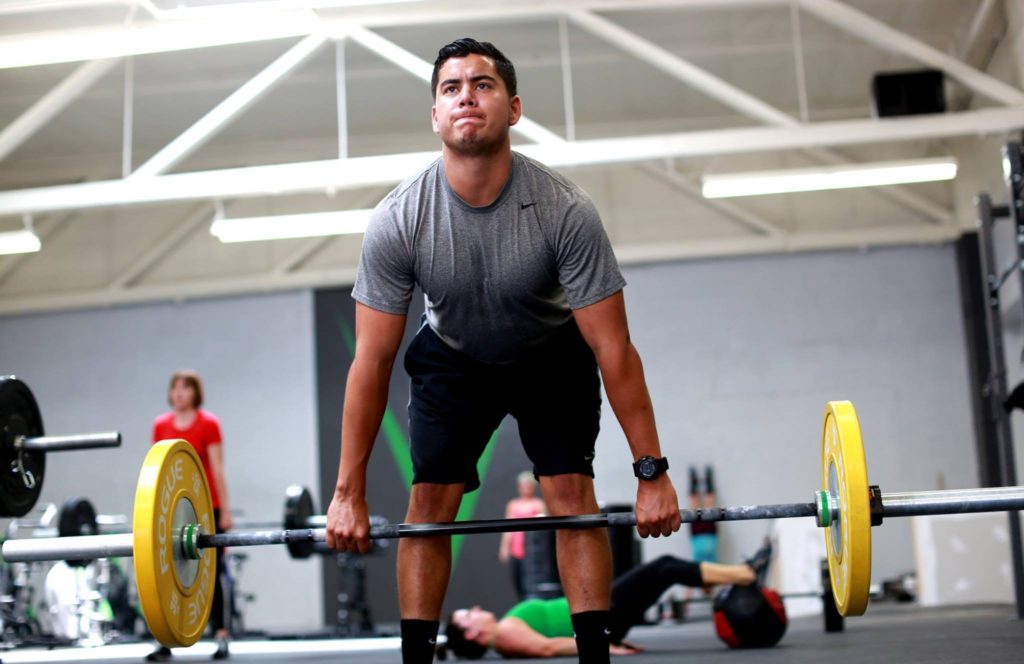
Increasing Strength Without Increasing Load
Written by Bryce Smith
In a previous blog post titled: Tendons Take Time – Understanding How We Adapt to Progressive Overload, we talked about reasons you may like or need to employ methods other than adding weight to the bar to increase strength to prevent injury and break through plateaus. This could not be more timely. With most people finding themselves working out at home with little or no equipment, the option to add more weight isn’t always an option.
How to Increase Strength Without Increasing Weight
These methods should mostly be used for the three main lifts – the squat, the deadlift and the bench press but could be used for other strength-based movements as well.
Method 1: Lengthen the Eccentric Phase
Add a two-second time domain in the descent of the movement, and focus on accelerating on the way up as if you were trying to make the load hit the ceiling. This tempo looks like this: 20X1
Method 2: Elongate the Eccentric
This method is very similar to the above method, but elongates the time of the eccentric loading phase. This can be used as a progression as the body adapts to more time under tension. Lengthen the time domain of the eccentric loading by lower on a five count and then once again accelerating on the way up. Try not to focus so much on the count and more on a super slow and controlled descent as counting may lead to diminished focus and more margin for error. If you can, have a training partner, or coach count for you. This tempo looks like this: 50X1
Method 3: Include a Static Hold
Keep the slow and controlled descent, but add a three-second pause in the hole of the squat. Yes, you are stopping on the bottom of the squat, but try to stay active while down there, and then focus on pressing the floor away and accelerating straight up without relying on a ballistic or additional bounce to get the load up. This tempo looks like this: 53X1
Method 4: Add a Pause or Three
Pauses during the various moments of the eccentric or lowering phase of the lift. Take three, two-second pauses during the upper third of the lift, middle third, and the bottom of the repetition. You can also play with a pause in the middle, and at the bottom. And of course, on the way up, try to move the weight as fast as possible to stimulate those hard to reach type ii muscle fibers that we want to wake up and come to the party. Either way, you are developing control in a potential sticking point which will help you blast through those sticking points when it comes time to add more weight to the bar.
Method 5: Lengthen the Concentric Phase
Now that we added a tempo on the eccentric (lowering) phase of the lift, why not add a tempo on the concentric (up) phase of the lifts as well? So now we will come down in a controlled fashion, and then pause in the lower third of the movement, middle third of the movement, and top of the movement. Spending more time in these positions and forcing our bodies to remain active in what are usual passing points allows us to familiarize with those shapes and how the load feels during certain points of the lift.
The more familiar we are with all of the positions of the lifts, the more prepared we will be to handle more weight or more volume. At the end of the day, we want the body to be prepared to handle our challenging training sessions and continually get stronger without placing the tendons or ligaments at risk with too much load before we are ready.
Give these tempo variations a shot and let us know how it goes in the comments section. These are some suggested tempos, but feel free to be innovative based on your needs and let us know how it goes. Stay patient and repeat the mantra that good things take time. For more on why we like tempo training, check out this blog post by CJ Martin.